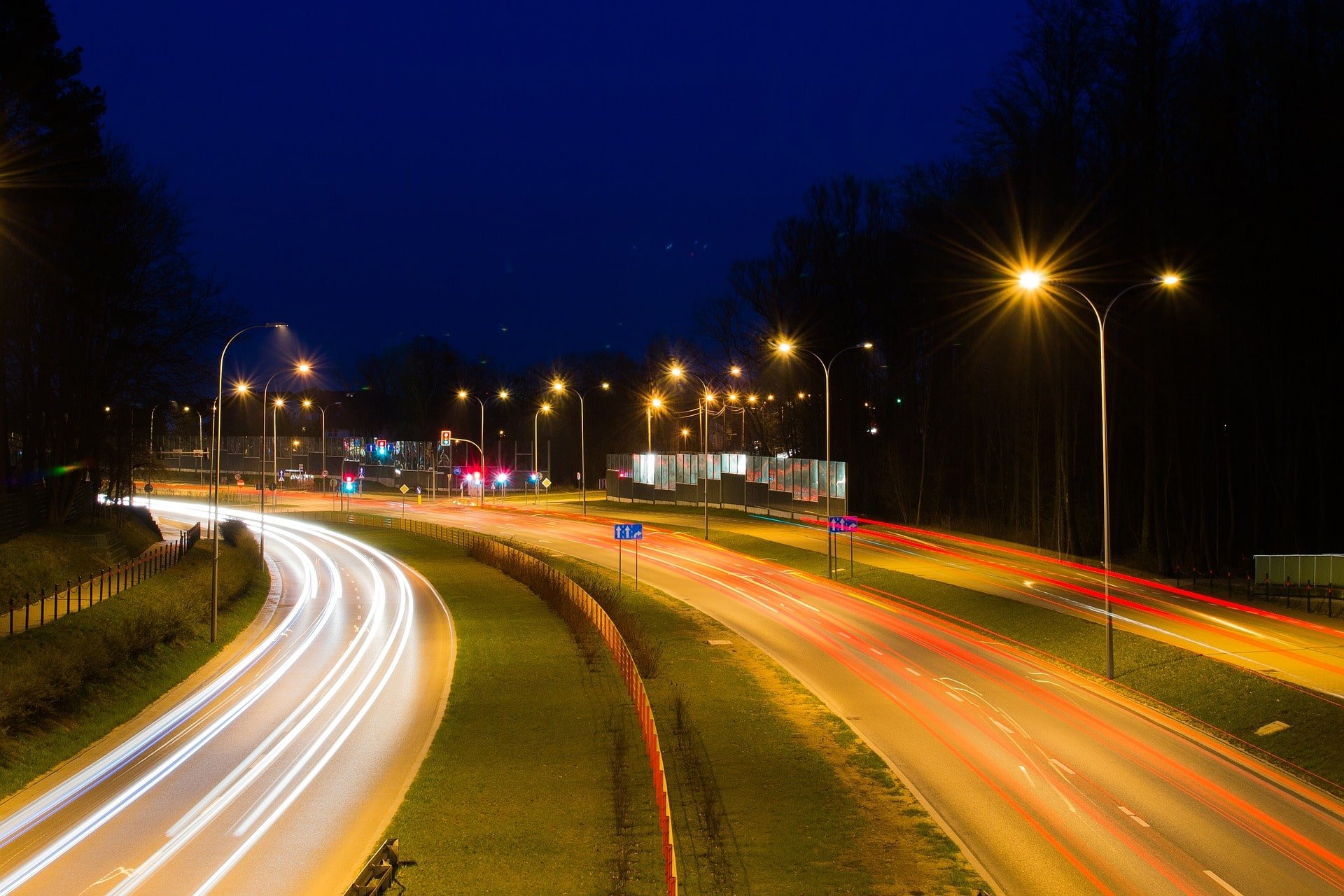
As we make our way towards the end of the year, our hours of daylight are beginning to get shorter and shorter. This means a lot more drivers will find themselves on the road well after the sun has gone down. Unfortunately, many people continue to find themselves unaware of the unique difficulties driving at night can pose. Knowing how to handle yourself and your vehicle when faced with reduced visibility and night driving hazards could prove to help you avoid an auto accident while on the dark roads. In this blog, we want to make sure you’re aware of tips and techniques that can help you lower the risks associated with driving at night.
So you may be wondering what exactly makes driving at night so risky. According to both the National Highway Traffic Safety Administration and the National Safety Council, the chance of being part of a fatal auto accident is three times higher after the sun has set. Even though most people only do a small fraction of their driving at night, almost half of all traffic fatalities occur at night. A combination of various factors lead to this.
Visibility
The most obvious of these factors is decreased visibility at night. Darkness is not the ideal condition for human eyes to function at full capacity. Your peripheral vision and depth perception are negatively impacted in darkness. Headlights can help with this problem, but even high-beam headlights only extend the area of visibility to 500 feet in front of the vehicle. Regular headlights only extend a mere 250 feet. This gives you as the driver a lower reaction time than normal and can make gauging distances more challenging, especially when traveling at high speeds. Further, the headlights of oncoming traffic can temporarily blind a driver.
It is also important be to sure that your vehicle is visible to other drivers on the road. One of the best ways to avoid accidents and road fatalities is to keep your car visible at night. Ensure that all of your vehicle’s exterior lights are functioning as they should and are clearly visible to other drivers. Also, reduce your speed and increase your following distance to give you extra time and room to maneuver in case of an emergency.
Distractions
Driving at night leaves you more susceptible to distractions, especially those that have to do with lighting. Bright lights create a sharp contrast in the darkness that can immediately draw your eyes and attention away from the road. You can quickly become distracted by the glare from your instrument panel or the approaching headlight of the truck in the oncoming lane. You may not even realize your concentration has wavered until you bring your attention back to the road. This is extremely dangerous when driving at night due to the aforementioned issues with visibility after the sun has set.
Do your best not to gaze directly into the headlights of the vehicles in the opposite lane. Be sure to dim your interior and dashboard lights. This should help to decrease the chance of glare on your windshield.
Rush Hour
The weekday hours between 4pm and 7pm are colloquially known as rush hour. This is one of the absolute most dangerous times to be out driving. The risk of being in an auto accident increases dramatically during this time. This is due to the vast number of vehicles all on the roads at once in the dwindling sunlight. Most of those drivers have just left work and are eager to make their way home, to the bar, to run errands, etc. The usual stop-and-go pace of rush hour traffic can add to the growing frustrations of other drivers. It’s also easier to become distracted behind the wheel if traffic is crawling along.
If you know you will have to be on the road during rush hour, do your best to plan ahead. Give yourself as much time as possible to reach your destination. Have some of your favorite music or audiobooks ready to play to help you remain calm in this most stressful of situations. Try not to take the actions of other drivers personally; remember that they are just as tired and frustrated as you may be. Drive defensively and do your best not to let your mind wander.
Higher Number of Impaired Drivers
After the sun sets, the risk of sharing the road with an intoxicated or impaired driver rises significantly. A lot of people are leaving bars and restaurants, and might have indulged in a few alcoholic beverages. According to the CDC, almost 30 people die everyday in crashes that involve a driver impaired by alcohol. The hours between midnight and 3am particularly tend to see more impaired drivers on the road.
Exercise extreme caution if you will be driving around areas with bars and restaurants later at night. Know how to identify a possibly intoxicated driver and do your best to avoid them. When you have reached a safe area, pull over and call 911 to alert police of the impaired driver.
Fatigue and Drowsiness
A poll conducted by the National Sleep Foundation found that 60% of adults have gotten behind the wheel while feeling fatigued or tired, and 37% admitted to having fallen asleep behind the wheel. These are some scary statistics. Driving while fatigued or drowsy is a very dangerous behavior that puts everyone on the road at risk. Drowsy drivers are just as likely to cause an auto accident as intoxicated drivers. A loss of just two hours of sleep can have a similar effect on driving ability as three beers. Drowsiness can lead to lack of concentration and an increased chance of risking driving behaviors on the road. Even on familiar roads and routes, suffering the effects of fatigue can lead to grave mistakes that can lead to serious injury.
Make sure you get plenty of rest, usually about 8 hours per night, before you have to get behind the wheel. Having a sleep schedule already in place can help with this. While driving, continuously scan the road for obstacles and keep your eyes moving to help your brain stay alert. Do not hesitate to pull into a rest stop and give yourself a break if needed. Even opening the car window or turning up the radio can help temporality stave off some symptoms of fatigue. Try to have another licensed driver join you, especially if you will be driving long distances. Not only can they help you stay awake by providing conversation and mental stimulation, but you could als ask them to take over behind the wheel if you start to feel like drowsiness is getting the best of you.
Let Our Team Help You if You Are Hurt in an Auto Accident
If you or a loved one suffers an injury in an auto accident, reach out to our team of compassionate personal injury attorneys. We will put forth every effort to get you the compensation you deserve for your suffering. We will give you a free consultation to begin the process. You won’t have to concern yourself with fees and payments until we emerge successful in your claim.
Give Lerner and Rowe Injury Attorneys a call at 844-977-1900. While our offices are open Monday through Friday from 8am to 5pm, we always have someone available and waiting to answer your call any time, 24/7. Please don’t hesitate to reach out to us online via the LiveChat feature available on our site.



